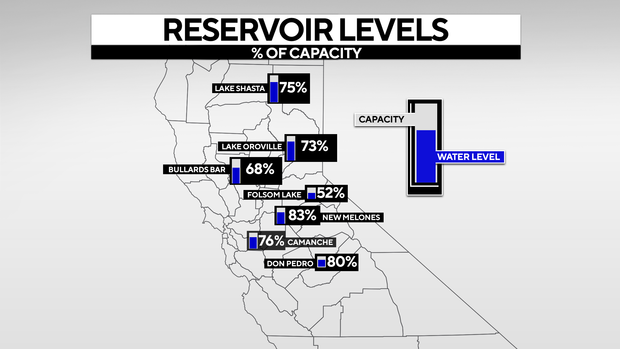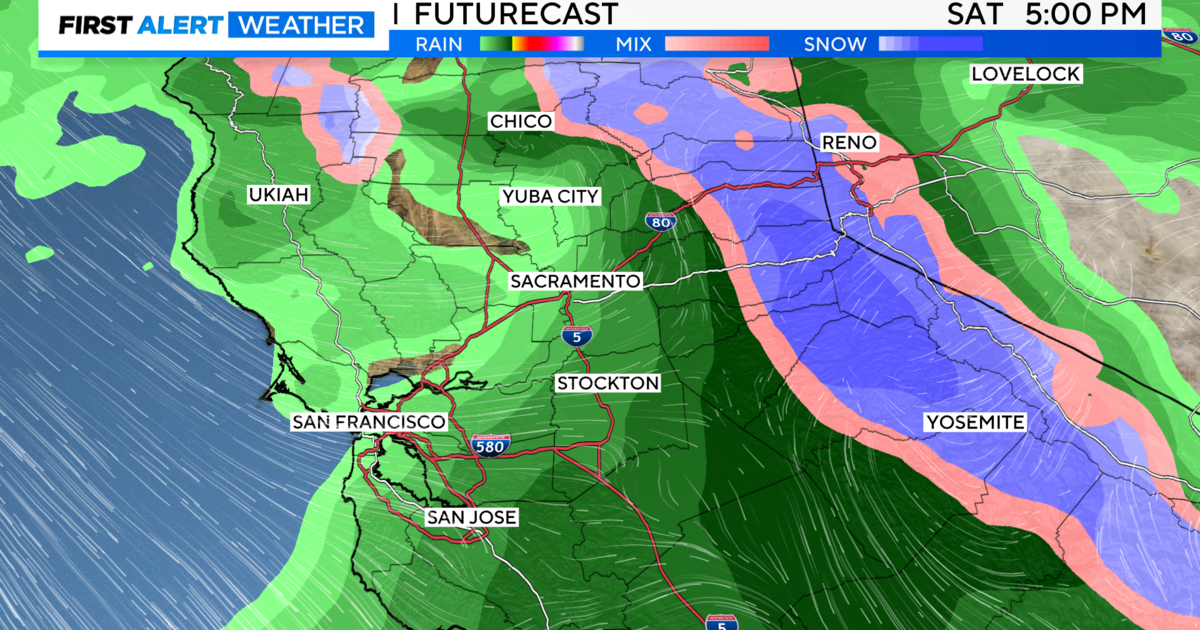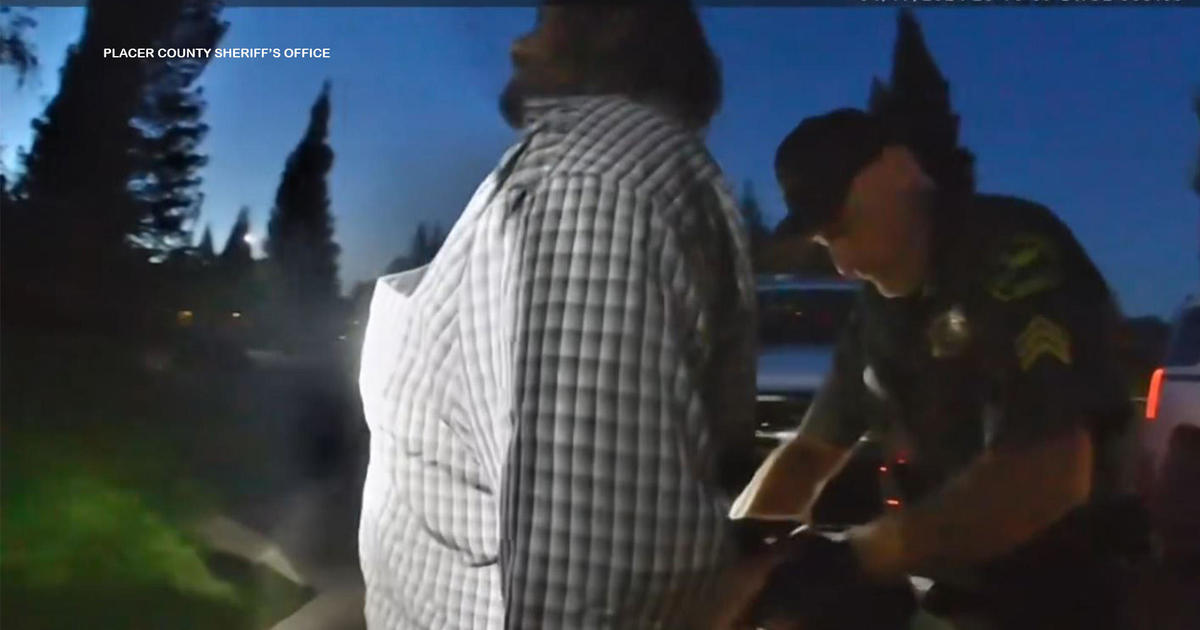California reservoirs get boost from recent storms. Here's what experts say we still need
SACRAMENTO - Our recent wet trend has brought a boost to our state's water supply, and we may be heading into another stretch of wet weather in February. So how are our reservoirs doing?
As of Tuesday, the California Department of Water Resources (DWR) reports most of Northern California's reservoirs have added 3% to 5% more water than they had on Jan. 18.
"Right now, statewide reservoirs storage is at 114% of average," said Jeanine Jones, DWR's interstate resources manager.
Each location surrounding Sacramento is reporting at least 50% of capacity.
This time is crucial for water managers to build up our supply and manage it if needed.
Jones said most of California's large reservoirs are operated for flood control during this time of the year as well as water storage, with space kept empty to rein in winter storm runoff. Operators make sure water never gets to the brim.
"They have to maintain reservoir elevations below a specified level so as it rains and more runoff starts coming into the reservoir, they have to keep releasing until they are back down their allowed maximum level," Jones said.
It depends on the reservoir and its size as to how much they can keep at one time.
"In the springtime, those restrictions to provide space for flood control are relaxed and they can begin filling reservoirs hopefully from snowmelt runoff," Jones said.
But that runoff may come sooner than later with California's low snowpack thanks to recent warmer storm systems.
"With conditions getting warmer, we expect to have less and less snowpack so it becomes more difficult to fully fill reservoirs at the end of the wet season," Jones said.
Storms have lacked a connection to colder air, leaving snow levels high. The storms from January 20-21 were an example of that as snow levels ranged above 6,000 feet in elevation.
"We have seen less snowpack formation. If it is warm and the freezing level is high much of the water will fall as rain rather than as snow," Jones said.
This means all the runoff may come too soon and leave smaller amounts by the time we head into spring and summer.
"We would like to see more snowpack but that is unlikely given the warming we've experienced in the climate system this century. Last year was very much an anomaly of how cold it was," Jones said.
She said the good news is that our reservoirs are built with extra space in mind for the years of more water.
"The Sierra Nevada reservoirs were to be designed to provide storage for that runoff and flood flow with the idea that you would then fill the reservoirs in the spring with snowmelt runoff," Jones said. "But the downside of that is with conditions getting warmer, we expect to have less and less snowpack, so it becomes more difficult to fully fill reservoirs at the end of the wet season. "
Statewide precipitation is about 80% of normal as of Tuesday and snowpack is at 55% of normal. So a change is certainly needed as our wet season gets closer to the finish line.
"On average, half of our typical precipitation in the water year is December, January and February so we are moving through the calendar very rapidly, but the snowpack isn't keeping up."
The good news is another wet pattern is on the way in early February. Yet, these storms look to bring more rain and less low-elevation Sierra snow. Make sure to stay with the CBS Sacramento First Alert Weather team for the latest updates.




